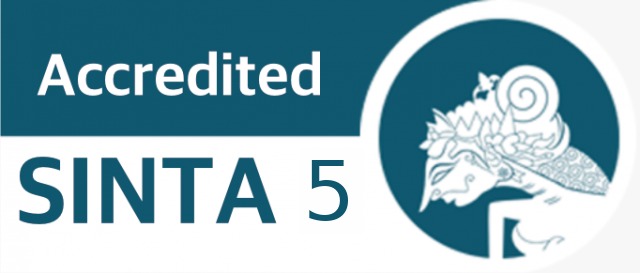Evaluasi Sifat Mekanik Sambungan Saw Material BS 1501 223 490B Melalui Uji Destruktif
DOI:
https://doi.org/10.61306/jnastek.v5i3.236Kata Kunci:
Mechanical Properties, SAW Welding, BS 1501 223 490B, Destructive Testing.Abstrak
his study aims to evaluate the mechanical properties of welded joints produced using the Submerged Arc Welding (SAW) method on BS 1501 223 490B steel material. The evaluation was carried out through destructive testing, including tensile test, bend test, and Charpy impact test. The tensile test revealed a maximum tensile strength of 584.39 N/mm² on the All Weld specimen, with an elongation of 26.23%. In the Transverse test, fracture occurred in the base metal, indicating that the weld joint had superior quality compared to the parent material. The bend test on both Face Bend and Root Bend specimens showed visually "Satisfactory" results, with maximum stress reaching 2,122.55 N/mm². The Charpy V-notch impact test indicated an average absorbed energy of 109.98 Joules at room temperature, demonstrating good toughness under impact loading. The results confirm that welded joints produced by the SAW method on BS 1501 223 490B steel exhibit excellent strength, ductility, and toughness, making them suitable for structural and high-pressure applications. This study reinforces the effectiveness of the SAW method in producing high-quality joints in the metal fabrication industry.
Unduhan
Referensi
D. R. Coughlin, "Boiler construction and safety design standards: Application to pressure vessel code," *ASME J. Pressure Vessel Technol.*, vol. 142, no. 4, pp. 041101-1–041101-9, 2020.
M. Mulia, S. Suardi, H. Susilo, F. K. Sinurat, and S. Supriadi, “Identification of hardness values of boiler pipes after heating and without heating process”, Computational, vol. 13, no. 2, pp. 50–56, Jul. 2024.
British Standard Institution, "BS 1501: Specification for carbon and carbon-manganese steel plates," BSI Standards, London, UK, 2016.
R. S. Parmar, *Welding Engineering and Technology*, 2nd ed., Khanna Publishers, 2018.
T. H. Kaya, A. Grajcar, and F. T. Kassaye, "Numerical Modeling of Charpy Impact Toughness Behavior of Quenching and Partitioning Steel Welds," *Symmetry*, vol. 17, no. 1, p. 53, Jan. 2025.
D. R. Hetrick, S. H. R. Sanei, O. Ashour, and C. E. Bakis, “Charpy impact energy absorption of 3D printed continuous Kevlar reinforced composites,” *Journal of Composite Materials*, vol. 55, no. 12, pp. 1705–1713, 2021.
M. A. Khan, M. A. Maleque, and M. M. Rahman, “Mechanical Characterization of Welded Joints Using Bend and Tensile Tests,” *International Journal of Automotive and Mechanical Engineering*, vol. 18, no. 1, pp. 8495–8504, 2021.
ISO 15614-1:2017, “Specification and qualification of welding procedures for metallic materials — Welding procedure test — Part 1: Arc and gas welding of steels and arc welding of nickel and nickel alloys,” International Organization for Standardization, Geneva, 2017.
M. Klasnic, J. Smid, and B. S. Y. Yousif, “An overview of submerged arc welding: Recent trends and development,” Journal of Manufacturing Processes, vol. 56, pp. 1419–1431, 2020.
D. T. Llewellyn and R. C. Hudd, Steels: Metallurgy and Applications, 3rd ed. Oxford, UK: Butterworth-Heinemann, 1998.
A. H. Yaghi, D. Smith, and A. G. Atkins, “Weld strength mismatch and structural integrity,” Engineering Failure Analysis, vol. 16, no. 1, pp. 1–17, Jan. 2009.
British Standards Institution, BS 1113:1999 — Specification for design and manufacture of water-tube steam generating plant, London, UK: BSI, 1999.
H. Kaya, A. Durgutlu, and I. Gecesoy, “Influence of welding parameters on mechanical properties of steel joints produced by submerged arc welding,” *Journal of Materials Processing Technology*, vol. 169, no. 3, pp. 347–352, 2010.
M. A. Khan, M. A. Maleque, and M. M. Rahman, “Mechanical Characterization of Welded Joints Using Bend and Tensile Tests,” *Int. J. Automotive and Mechanical Engineering*, vol. 18, no. 1, pp. 8495–8504, 2021.
M. Kheradmand, M. Kermanpur, and A. Shamanian, “Evaluation of Weld Quality Using Combined Bend and Hardness Tests in Dissimilar Steel Joints,” *Materials Testing*, vol. 62, no. 11, pp. 1111–1118, 2020.
T. H. Kaya, A. Grajcar, A. Kozłowska, dan F. T. Kassaye, “Numerical Modeling of Charpy Impact Toughness Behavior and Stress Distribution of Quenching and Partitioning Steel,” Symmetry, vol. 17, no. 1, p. 53, Jan. 2025.
D. R. Hetrick, S. H. R. Sanei, O. Ashour, dan C. E. Bakis, “Charpy impact energy absorption of 3D printed continuous Kevlar reinforced composites,” Journal of Composite Materials, vol. 55, no. 12, pp. 1705–1713, 2021.
Dan D. R. Hetrick et al., “Comparison of the Charpy Resilience of Two 3D Printed Materials,” Engineering, Technology & Applied Science Research, vol. 13, no. 1, pp. 232–237, 2023.
J. M. et al., “Predicting Ductile–Brittle Transition Temperatures for Polyolefins Based on CNN and Notched Charpy Tests,” Polymers, vol. 15, no. 2, pp. 198–210, 2023.
Unduhan
Diterbitkan
Cara Mengutip
Terbitan
Bagian
Lisensi

Artikel ini berlisensiCreative Commons Attribution-ShareAlike 4.0 International License.
HAK CIPTA
Hak cipta atas artikel apapun pada Jurnal Nasional Teknologi Komputer (JNASTEK) dipegang penuh oleh penulisnya dibawah lisensi Creative Commons Attribution-ShareAlike 4.0 International License.
1. Penulis mengakui bahwa Jurnal Nasional Teknologi Komputer (JNASTEK) berhak sebagai yang mempublikasikan pertama kali dengan lisensi Creative Commons Attribution-ShareAlike 4.0 International License - CC BY-SA.
2. Penulis dapat memasukan tulisan secara terpisah, mengatur distribusi non-ekskulif dari naskah yang telah terbit di jurnal ini kedalam versi yang lain (misal: dikirim ke respository institusi penulis, publikasi kedalam buku, dll), dengan mengakui bahwa naskah telah terbit pertama kali pada Jurnal Nasional Teknologi Komputer (JNASTEK).
LISENSI
Jurnal Nasional Teknologi Komputer (JNASTEK) diterbitkan berdasarkan ketentuan Creative Commons Attribution-ShareAlike 4.0 International License. Lisensi ini mengizinkan setiap orang untuk menyalin dan menyebarluaskan kembali materi ini dalam bentuk atau format apapun, menggubah, mengubah, dan membuat turunan dari materi ini untuk kepentingan apapun, termasuk kepentingan komersial, selama mereka mencantumkan kredit kepada Penulis atas ciptaan asli.



















